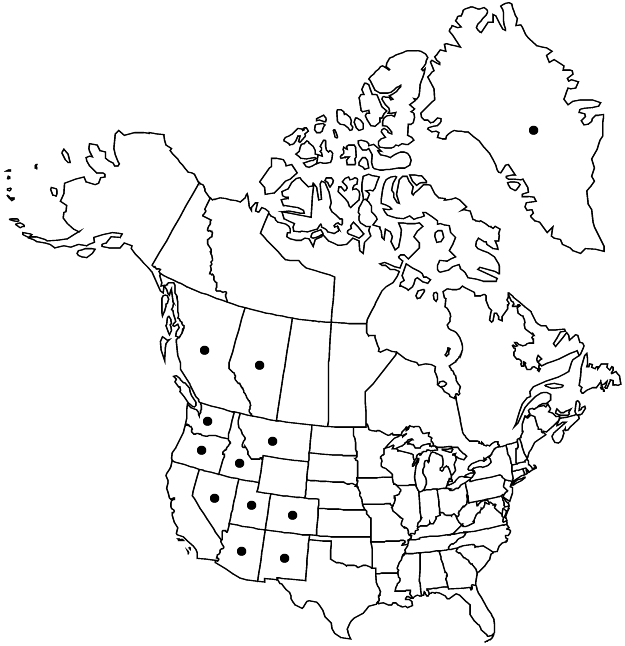Vaccinium myrtillus
Sp. Pl. 1: 349. 1753,.
Plants forming open colonies, 0.5–12 dm, rhizomatous; twigs green, conspicuously 3-angled, glabrous or minutely puberulent along grooves. Leaf blades bright green, broadly elliptic or ovate, 19–27 × 7–11 mm, margins sharply serrate, surfaces laxly glandular abaxially. Flowers: calyx green, lobes ± recurved (or absent and margins of tube sinuate), deltate, 0.4–0.6 mm, glabrous; corolla pink, cream, or greenish white, globose, 3–5 × 5–7 mm, thin, glaucous; filaments glabrous. Berries purple-black or bluish black, rarely reddish or red, 7–9 mm diam. Seeds ca. 1 mm. 2n = 24, 48.
Phenology: Flowering late spring–summer.
Habitat: Heaths, montane heaths, boggy barrens, degraded meadows, open coniferous forests, oak parklands, disturbed or open birch woods, hummocky seepage slopes, moraines
Elevation: 0-2600 m
Distribution

Greenland, Alta., B.C., Ariz., Colo., Idaho, Mont., Nev., N.Mex., Oreg., Utah, Wash., Europe, e Asia (Japan).
Discussion
Vaccinium myrtillus fruits are popular in Europe and are known to possess antioxidants and other compounds beneficial to vascular health. Berries in Europe are extensively harvested from wild stands. In North America, the fruits were used by the Kootenai, Carrier, Shuswap, and other native tribes. The small plant and fruit sizes create challenges for commercialization in North America.